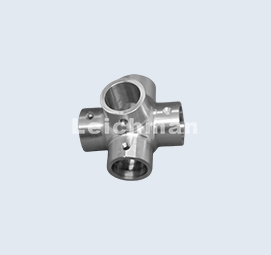Form of processing trade: CNC machining
Processing material: zinc alloy
Processing type: finishing
Tolerance:±0.06mm
Processing method: five-axis machining center processing
Surface roughness: Ra1.6
The main difference between five-axis machining and four-axis machining is reflected in the processing freedom and processing accuracy. Five-axis machining has a higher degree of freedom and higher precision, and can be applied to more complex machining tasks.
1. Processing freedom: Five-axis machining has a higher degree of freedom than four-axis machining. In five-axis machining, complex machining operations can be performed by rotating one or more axes to align the tool at any angle of the workpiece. In contrast, four-axis machining has a relatively low degree of freedom, and the angle of the tool can only be changed by rotating one axis.
2. Processing accuracy: Since five-axis machining has a higher degree of freedom, it can perform more complex processing operations on the workpiece, so the accuracy of five-axis machining is usually higher than that of four-axis machining.
In addition, there are some differences between five-axis machining and four-axis machining in terms of programming, equipment structure, and application scope.
For example, the programming of five-axis machining is more complex than four-axis machining and requires more calculations and control; the equipment structure of five-axis machining is more complex than four-axis machining and requires more sensors and control components; the application range of five-axis machining Wider than four-axis machining, it can be applied to more complex machining tasks.
